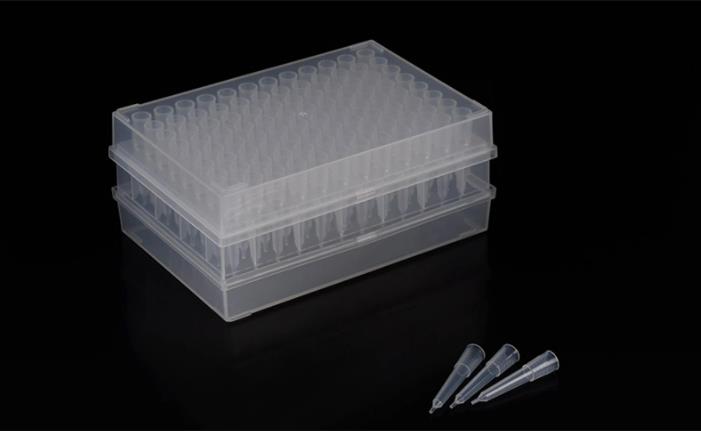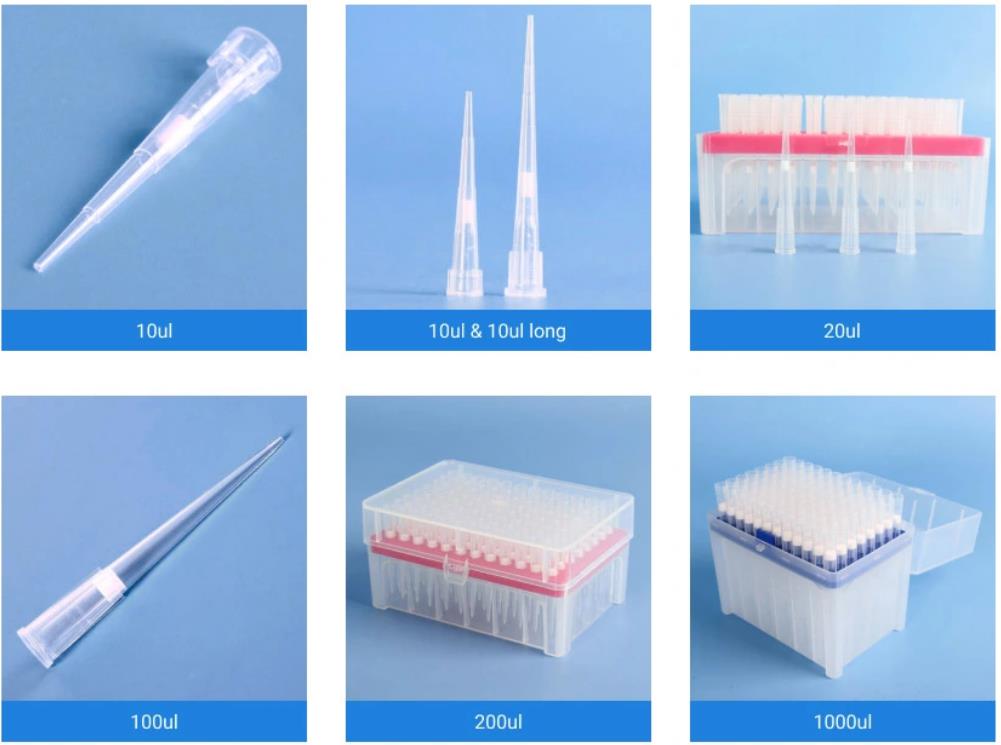The main function of pipette tips is to ensure accurate and precise liquid dispensing. They have fine tips that allow for precise control of liquid volumes during pipetting. This accuracy is crucial in various laboratory applications, such as DNA sequencing, PCR, cell culture, and sample preparation for analysis.
Furthermore, pipette tips are disposable, easily interchangeable, and designed for single-use to prevent sample carryover and contamination. After each use, the used pipette tip is discarded, and a new, sterile one is attached to maintain the integrity and purity of subsequent samples.



Item NO. | Description | Packing Info. | Qty./case(pc) | Case Size(cm) |
D20 | mach with FUJI FDC 7000 Dry Chemical Analyzer | (rack of 96pcs*6/middle box)*20 | 120rack | 62.5×26×46 |
In the field of laboratory work, precise liquid handling is a fundamental skill that requires attention to detail. The selection and proper use of Pipette tips play a crucial role in achieving accurate and reproducible results. This article aims to provide a comprehensive guide on how to choose and utilize the right Pipette tips for various applications.
Consider the Sample Type:
Different samples necessitate varying pipette tip materials. Polypropylene tips are commonly used for general applications, while low retention tips are ideal for minimizing sample loss and promoting accurate volume delivery. Filter tips, with built-in filters, are recommended for samples containing particles or biological substances that need to be protected from contamination.
Select the Right Tip Volume and Size:
Pipette tips come in various volumes and sizes. It is essential to choose a tip that best matches the volume range you are working with. Selecting a tip with a suitable size ensures an optimal fit on the pipette shaft and prevents any leaks or inaccurate volume measurements.
Assess Compatibility with Pipette Brand and Model:
Different pipette brands and models may require specific types of tips for optimal performance. Ensure that the chosen pipette tips are compatible with your pipette system to ensure a secure fit and airtight seal, minimizing the risk of errors or sample loss.
Before pipetting any precious samples, it is advisable to pre-wet the tip. This involves aspirating and dispensing the liquid without touching the sample vessel. Pre-wetting enhances liquid accuracy and prevents sample retention on the inside of the tip.
To ensure a tight seal, firmly press the pipette tip onto the shaft until it is fully seated. Avoid excessive force, as it may damage the tip or cause it to detach during pipetting, compromising results and sample integrity.
The immersion depth of the pipette tip into the sample is crucial. Submerge the tip adequately, but be cautious not to touch the walls or bottom of the sample container. Improper immersion may lead to inaccurate volumes or sample contamination.
When aspirating the sample, move gently to avoid turbulence, which could affect volume accuracy. Ensure the tip is fully submerged and release the plunger smoothly to draw up the desired volume. During dispensing, touch the tip to the side of the receiving vessel to avoid splashing or clinging to the walls, ultimately ensuring accurate volume delivery.
After each use, promptly dispose of used pipette tips in designated Waste containers to prevent sample cross-contamination or carryover, which could compromise future experiments.
Choosing and using the right pipette tips is essential in obtaining accurate and reliable laboratory results. By considering the sample type, selecting the appropriate tip volume and size, and confirming compatibility with the pipette system, scientists can optimize liquid handling procedures. Additionally, implementing effective pipette tip techniques such as pre-wetting, proper loading and immersion depth, and careful aspiration and dispensing methods contribute to precision and reproducibility. By following these guidelines, researchers can ensure the integrity of their experiments and enhance the overall quality of their scientific endeavors.
Contact: Neo
Phone: 008615867460640
E-mail: Info@Hwtai.com
Whatsapp:008615867460640
Add: Building 2, Xinmao Qilu Science Technology Industrial Park, Tianqiao District, Jinan City, Shandong Province,China.
We chat
